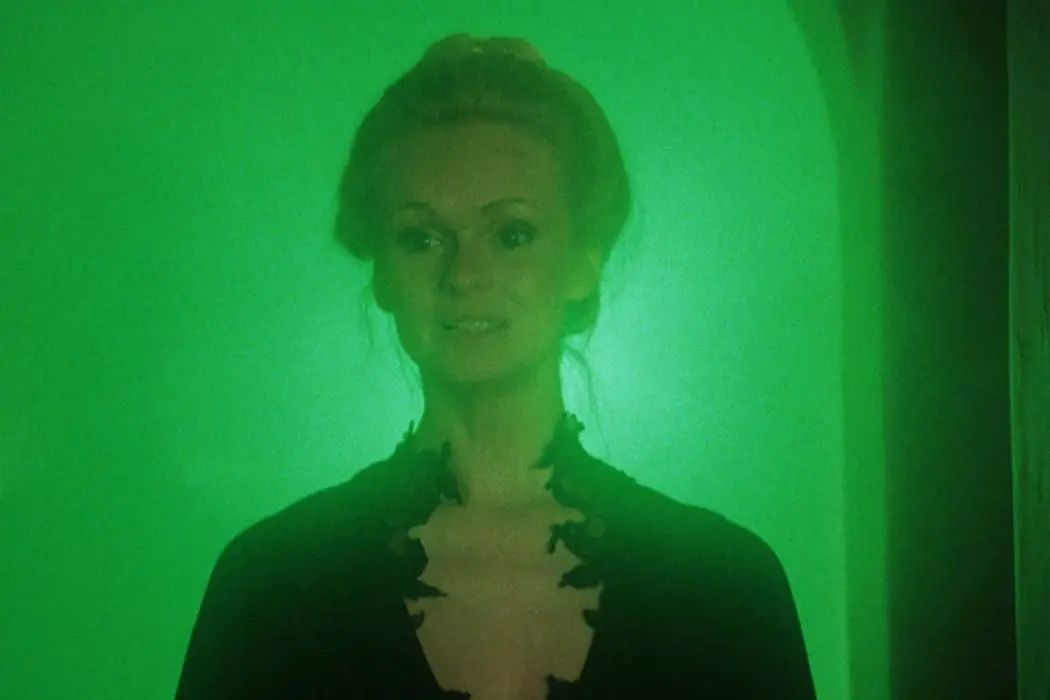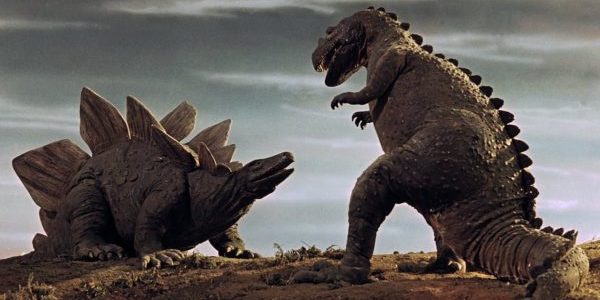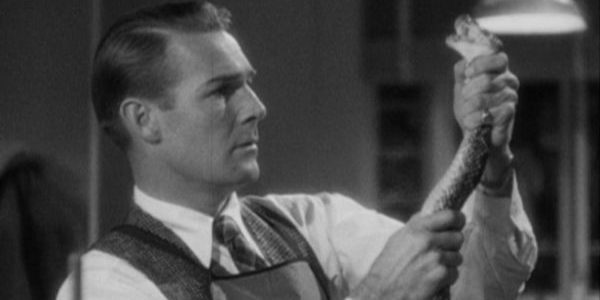Video Dispatches: JOURNEY TO THE BEGINNING OF TIME, BEYOND EVIL & Universal Horror

Midwesterner, movie lover, cinnamon enthusiast.
Video Dispatches is a regular column covering recent home video releases.
Journey to the Beginning of Time (1955) – Second Run

Czech artist Karel Zeman’s Journey to the Beginning of Time follows a quartet of young boys as they chart prehistoric Earth after they portal from their present-time existence through a mysterious cave. That setup is both a clever metaphor for boys learning about history and a great excuse for Zeman to create some incredible animation of prehistoric figures. Journey to the Beginning of Time, a children’s film, is remarkable for how curious it is regarding the boys’ interests, our world’s history and the film as flexible medium that, just like Earth, should be explored.
It’s hard for me to watch this without comparing it to the landscape of American children’s films that has been developed since, where children are merely a demographic to be tapped for cash through algorithmic design. Zeman’s film refuses to treat its audience as naive or as a group that has a set of demands for their entertainment. This film isn’t made with a prescribed recipe, just an overwhelming curiosity.
Speaking of recent children’s films, Second Run have included, alongside a short restoration feature, making-of supplement and English-dubbed 1966 version of the film, a decent-length interview with John Stevenson, director of Kung Fu Panda. He talks about first seeing a still of the film somewhere and instantly needing to track it down. It really is that kind of movie, where the beauty of Zeman’s mise-en-scene and tangible animation beg for discovery.
As a bitter side note, Journey to the Beginning of Time ends with a lovely passage about the unstoppable growth of the world and its species — a message that is hard to receive with the same level of enthusiasm conceivable 60 years ago.
Universal Horror Vol. 2 (1933-1943) – Scream Factory

The first volume of Scream Factory’s rapidly released sets of horror films from classic Hollywood was thematically tied by the appearances, sometimes more prevalent than others, of Bela Lugosi and Boris Karloff.
It’s harder to tie all four films in the second volume so easily. The first three, Murders in the Zoo, Mad Doctor of Market Street and The Strange Case of Doctor Rx, all feature performances from underappreciated horror legend Lionel Atwill. That seems to be the primary inspiration for the packaging here, considering the lone feature is a new supplement dedicated to Atwill, but the fourth film, The Mad Ghoul, is absent Atwill, and the press copy accompanying the release both downplay Atwill as the central figure of the package and avoid any one thematic concern. I suppose this is all fine, and may become clearer as more of these sets come out, but is a bit confusing considering the first set and Atwill-centric material here.
Thankfully, the feature on Atwill is terrific and contains a lot of fun bits of info from historian Greg Monk, who also contributes a commentary on the Murders in the Zoo disc and, if I recall correctly, was a regular on the four-part documentary strewn throughout the four discs on the first volume.
The films range from solid to slight fun, never outstaying their welcome with the longest running a brisk 66 minutes. Like the first volume, this one peaks with its first film, Murders in the Zoo, which is shockingly dark from its opening moments.Cine
Beyond Evil (1980) – Vinegar Syndrome

After a newlywed couple, Larry and Barbara Andrews, are swindled into thinking they’re about to move into a new place in the Philippines in Herb Freed’s Beyond Evil, they end up staying in a mansion haunted by Alma, one of the first owners of the home.
The conceit isn’t dissimilar from another recent Vinegar Syndrome release, Pledge Night. A character from the past whose been wronged in this space comes back to wreak terror. Unfortunately, Beyond Evil takes much longer to get going. The first third of the film is rather boring discussions before Larry Barbara get to the mansion. And though things certainly pick up following the introduction of Alma, the schlocky horror only reaches middling fun, mostly due to some really interesting, if not technically amazing, visual effects that range from clumsy to clever.
I’m routinely amazed by the work Vinegar Syndrome, and maybe it’s a result of the disparity between their Blu-Rays and the quality we’re used to seeing the type of fare they put out — cult relics of the VHS era — but regardless, Beyond Evil looks great.
Included on the disc are two interview features; one with Freed and one with producer David Baughn. They each run about 15 minutes and are very different but complementary. Freed eschews any memory of production notes and actor and crew relationships to address the film’s textual material, which is colored by his own spiritual past and relationship to the spirit world. He makes a distinction that Beyond Evil isn’t a horror film, but a spiritual film. Meanwhile, Baughn sticks to detailing the film’s production history.
Does content like this matter to you?
Become a Member and support film journalism. Unlock access to all of Film Inquiry`s great articles. Join a community of like-minded readers who are passionate about cinema - get access to our private members Network, give back to independent filmmakers, and more.













